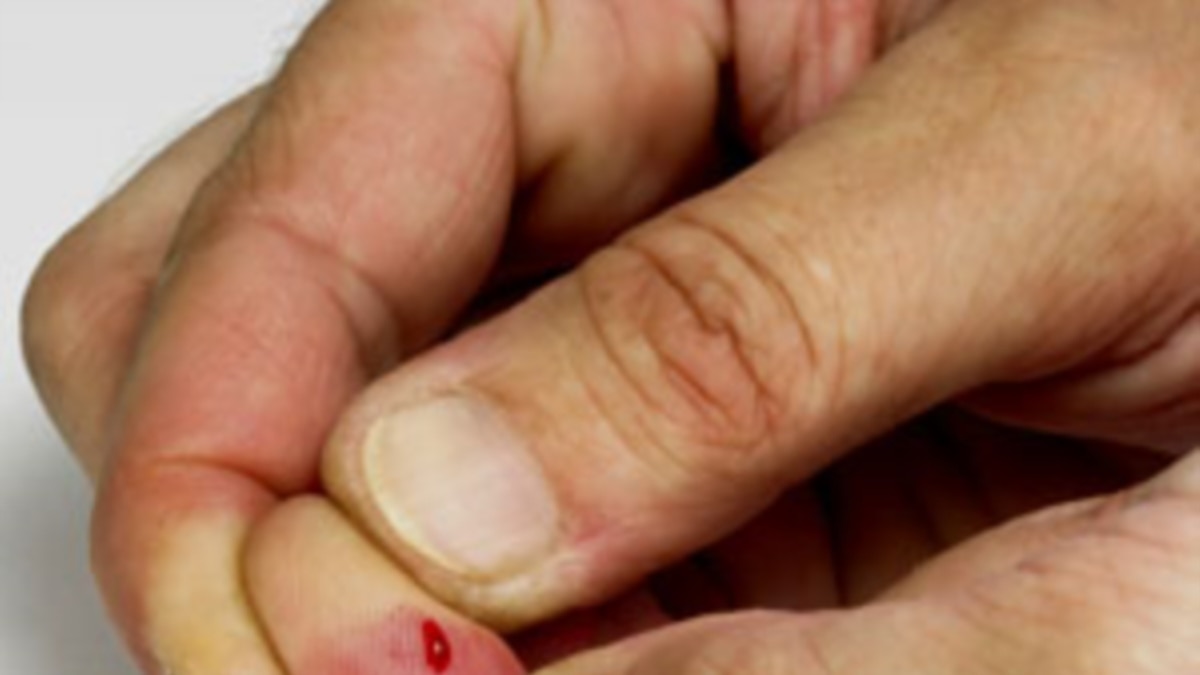
- Cut fingers cracked#
- Cut fingers skin#
- Cut fingers full#
The hand or foot is then wrapped with a bulky bandage or cast so that it can't move. Cut fingers skin#
If needed, skin taken ( graft) from other areas of the body is used to cover places that are missing skin.
The skin is cut into flaps, and the soft tissues are cut to separate the fingers or toes. The surgeon marks the areas of the skin that need repair. 
General anesthesia is more commonly used for younger kids because it is safer to manage them while they are sleeping. Or regional anesthesia ( spinal and epidural) is given to numb the arm and hand. This means your child is asleep and won't feel pain.
Cut fingers full#
You, the reader, assume full responsibility for how you choose to use it.Ĭopyright 2000-2022.
Remove any ring that is on an injured finger.Īnd remember, contact your doctor if your child develops any of the 'Call Your Doctor' symptoms.ĭisclaimer: this health information is for educational purposes only. A new nail will grow in over 6 to 8 weeks. After about 7 days, the nailbed should be covered by new skin. Then cover with a bandage (such as Band-Aid). Use an antibiotic ointment (such as Polysporin). Soak the finger for 20 minutes in cold water for pain relief. Reason: Pieces of nail taped in place will catch on objects. Use a pair of scissors that have been cleaned. For a large flap of nail that's almost torn through, cut it off. Cut fingers cracked#
For a cracked nail without rough edges, leave it alone. Torn Nail (from catching it on something):. Wash the finger with soap and water for 5 minutes. If the pain is more than mild, "buddy-tape" it to the next finger. Soak the hand in cold water for 20 minutes. If movement is limited, your doctor must check for a broken bone. Your child should be able to bend and straighten each finger. Caution: Be certain range of motion is normal. Cover it with a bandage (such as Band-Aid). For any cuts, use an antibiotic ointment (such as Polysporin). For any dirt in the wound, scrub gently. Wash the wound with soap and water for 5 minutes. Keep using pressure until the bleeding stops. Press down firmly on the place that is bleeding for 10 minutes. For any bleeding, put direct pressure on the wound. Another choice is an ibuprofen product (such as Advil). To help with the pain, give an acetaminophen product (such as Tylenol). Here is some care advice that should help. You can treat minor finger injuries at home. There are also many types of finger injuries. There are many ways that children can hurt their fingers. What You Should Know About Finger Injuries:. Not using the finger normally after 2 weeks. You think your child needs to be seen, but the problem is not urgent. Clean cut and no tetanus shot in more than 10 years. Dirty cut or hard to clean and no tetanus shot in more than 5 years. You think your child needs to be seen, and the problem is urgent. You think your child has a serious injury. Severe pain and not better 2 hours after taking pain medicine. Can't open and close the hand or use the fingers normally. Dirt in the wound is not gone after 15 minutes of scrubbing. Note: tetanus is the "T" in DTaP, TdaP, or Td vaccines. Skin is cut and No past tetanus shots. Base of nail has popped out from under the skin fold. Blood under a nail is causing more than mild pain. Skin is split open or gaping and may need stitches. When to Call for Finger Injury Call Doctor or Seek Care Now It keeps your child from doing all normal activities. Moderate: the pain keeps your child from doing some normal activities. But, the pain does not keep your child from any normal activities. Mild: your child feels pain and tells you about it. The finger has been pushed out of its joint. .jpg)
This can relieve the pain and prevent loss of the fingernail. A doctor can put a small hole through the nail. These need the pressure under the nail released. It can also be from a heavy object falling on the nailbed. This can be from a door crushing the finger.
 Subungual Hematoma (Blood Clot under the Nail). If the nailbed is cut, it needs sutures to prevent a deformed fingernail. If they do occur, they are at risk for a bone infection (osteomyelitis). Broken bones are not common with this kind of injury.
Subungual Hematoma (Blood Clot under the Nail). If the nailbed is cut, it needs sutures to prevent a deformed fingernail. If they do occur, they are at risk for a bone infection (osteomyelitis). Broken bones are not common with this kind of injury. 
The end of the finger may get a few cuts or a blood blister. Most often, this is from a car door or a screen door. For jammed fingers, always check that the fingertip can be fully straightened. The energy is absorbed by the joint surface and the injury occurs there. The end of a straightened finger or thumb receives a blow.
Cuts, Scrapes (skinned knuckles) and Bruises.



.jpg)




 0 kommentar(er)
0 kommentar(er)
